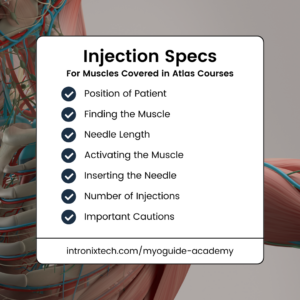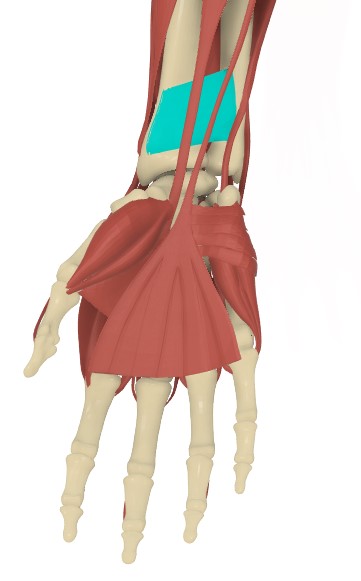Using Myoguide Academy Anatomical Courses as Reference Material
We’ve recently released several new anatomical eLearning courses on the Myoguide Academy. Injections targeting specific muscles, therapeutic or aesthetic, require a level of precision and expertise beyond basic injections (e.g., vaccinations).
Our courses work as excellent educational content when worked through linearly; however, they can also be used as reference materials non-linearly. For instance, you can choose to review anatomical information about one specific muscle rather than working through the course one lesson at a time.
For example, this graphic describes the injections specifications included in each lesson:
Our Anatomical Injection Courses:
- Anatomical Atlas of the Head & Neck Related to Neuromodulator Injection and the Management of Spasticity (here)
- Includes access to 3D-Anatomical Head and Neck model: Martha
- Anatomical Atlas of the Upper Limb Related to Neuromodulator Injection and the Management of Spasticity (here)
- Includes access to 3D-Anatomical Arm model: Francis
- Anatomical Atlas of the Lower Limb Related to Neuromodulator Injection and the Management of Spasticity (here)
- Includes access to 3D-Anatomical Leg model: Lexi
- Medical Aesthetic Injections Considerations and Approaches (here)
- Includes access to 3D-Anatomical Head and Neck model: Martha
Check out the demo reel for our 3D-anatomical models:
For Example…
Imagine you’re a physiatrist managing a patient with upper limb spasticity following a stroke. The patient is experiencing persistent forearm pronation that’s limiting function. You determine that the Pronator Quadratus is playing a significant role—but it’s a muscle you’ve only injected once, and you’d like to revisit its anatomy and injection specifications before proceeding.
With access to the Anatomical Atlas of the Upper Limb Related to Neuromodulator Injection and the Management of Spasticity, you immediately locate the Pronator Quadratus lesson. You review the muscle’s deep position in the distal forearm, its proximity to the radial and ulnar arteries, and how to best position your patient to ensure safe and accurate localization. The course provides detailed injection specifications—needle length, angle, number of sites—and highlights key cautions to avoid neurovascular injury.
To solidify your plan, you use the interactive 3D model, isolating the Pronator Quadratus, rotating the forearm view, and confirming the approach in relation to surrounding muscles and structures.
With these tools, you feel prepared to offer your patient a safe and targeted intervention—one that could restore useful function and relieve discomfort.
In Conclusion…
In conclusion, our courses are dynamic and offer utility beyond linear learning. They can be used as reference materials, helping you visualize and plan before tricky procedures.
Head to the Myoguide Academy to enroll in our comprehensive anatomical courses today!



